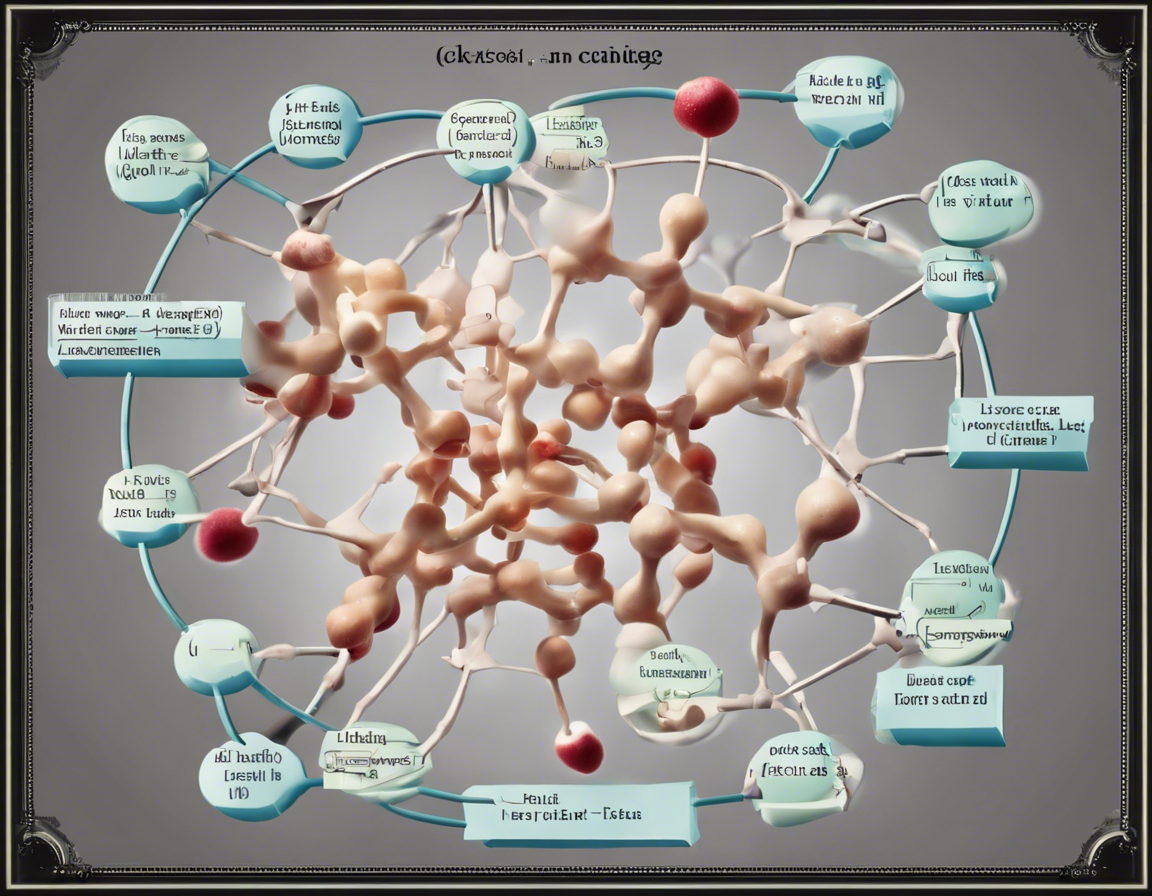Lactose is a disaccharide sugar found abundantly in milk and dairy products, consisting of two simple sugar molecules, glucose, and galactose, linked by a glycosidic bond. This linkage is crucial for various biological processes and is responsible for lactose intolerance in some individuals. In this article, we will explore the linkage present in lactose, its significance, and implications.
Structure of Lactose
Lactose, also known as milk sugar, has a chemical formula C12H22O11 and is composed of one molecule of glucose and one molecule of galactose bonded together by a β(1→4) glycosidic linkage. This linkage is formed through a condensation reaction between the hydroxyl group of carbon-1 of galactose and the hydroxyl group of carbon-4 of glucose, resulting in the formation of a glycosidic bond and the release of a molecule of water.
Significance of the Linkage
-
Digestion: The β(1→4) glycosidic linkage in lactose is hydrolyzed by the enzyme lactase present in the small intestine. This enzyme breaks the bond between glucose and galactose, allowing for the individual absorption of these monosaccharides into the bloodstream.
-
Nutritional Value: Lactose serves as a source of energy due to its glucose and galactose components. Once hydrolyzed, these sugars can be utilized by the body for energy production and various metabolic processes.
-
Importance in Infants: Lactose is the primary carbohydrate in breast milk, providing essential nutrients and energy for the growth and development of infants. The ability to digest lactose is crucial during the early stages of life.
Implications of Lactose Linkage
-
Lactose Intolerance: Some individuals lack sufficient lactase enzyme activity, leading to the inability to digest lactose effectively. This condition, known as lactose intolerance, results in symptoms such as bloating, gas, diarrhea, and abdominal discomfort upon consuming lactose-containing foods.
-
Fermentation: Undigested lactose in the colon can be fermented by gut bacteria, producing gas and various byproducts. This fermentation process contributes to the symptoms experienced by individuals with lactose intolerance.
FAQs about Lactose Linkage
-
What is the primary linkage present in lactose?
The primary linkage in lactose is a β(1→4) glycosidic bond between glucose and galactose. -
How is lactose digested in the body?
Lactose is broken down into glucose and galactose by the enzyme lactase in the small intestine. -
Why do some individuals experience lactose intolerance?
Lactose intolerance occurs due to low levels of lactase enzyme, leading to undigested lactose reaching the colon. -
Can lactose intolerance be managed with diet?
Yes, individuals with lactose intolerance can manage their symptoms by limiting or avoiding lactose-containing foods or using lactase supplements. -
Is lactose intolerance common worldwide?
Lactose intolerance varies among populations, with higher prevalence in certain ethnic groups, such as individuals of East Asian, African, and Native American descent.
In conclusion, the linkage present in lactose plays a crucial role in its digestion, nutritional value, and implications for certain individuals. Understanding the structure and significance of this linkage is essential for appreciating the complexities of carbohydrate metabolism and its impact on human health.
